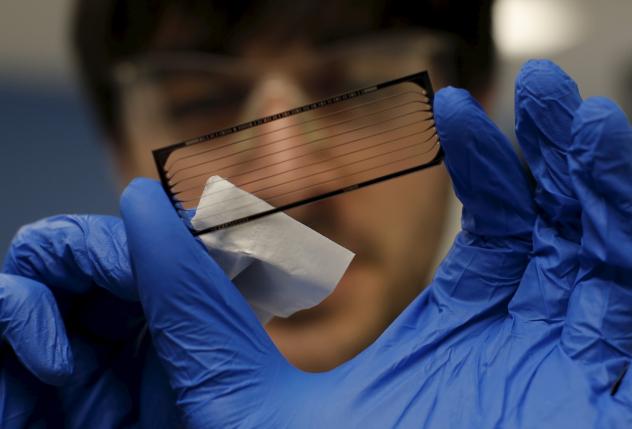 Drug manufacturers have begun amassing enormous troves of human DNA in hopes of significantly shortening the time it takes to identify new drug candidates, a move some say is transforming the development of medicines.
Drug manufacturers have begun amassing enormous troves of human DNA in hopes of significantly shortening the time it takes to identify new drug candidates, a move some say is transforming the development of medicines.
The efforts will help researchers identify rare genetic mutations by scanning large databases of volunteers who agree to have their DNA sequenced and to provide access to detailed medical records.
Regeneron Pharmaceuticals Inc, which signed a deal with Pennsylvania’s Geisinger Health System in January 2014 to sequence partial genomes of some 250,000 volunteers, is already claiming discoveries based on the new approach. Company executives told Reuters they have used data from the first 35,000 volunteers to confirm the promise of 250 genes on a list of targets for drugs aimed at common medical conditions, including high levels of cholesterol and triglycerides.
Pfizer Inc, Roche Holding AG and Biogen Inc are working on similar projects that use DNA and patient health data to find new drug targets or predict the effects of drugs.
Their investments have been inspired by early successes in cancer with drugs such as Pfizer’s lung cancer treatment Xalkori, which was approved in 2011 and targets mutations in tumours driving the disease. More recently, Vertex Pharmaceuticals has changed the treatment of cystic fibrosis with Kalydeco, which targets the disease’s underlying genetic cause.
It took nearly two more decades and several groups of scientists to fully understand the potential cardiovascular benefits linked to mutations in that gene.
Since last autumn, the Regeneron Genetics Center has sequenced the DNA of more than 35,000 Geisinger patients and is on track to sequence 100,000 by year end. Already, the company has identified 100 people carrying similar cholesterol-affecting mutations to those first observed in Campodimele and elsewhere.
PRECISION MEDICINE
Identifying target genes is just a first step, though, and does not guarantee that a drug can be developed on a genetic lead, or that it will ultimately be safe and effective enough to be used.
Experts also differ on approach. Regeneron is sequencing exomes, the protein-making genes that comprise 1 to 2 percent of the genome, a search that costs roughly $700 per person. Others favour looking at the whole genome, which costs the $1,500 per person.
Craig Venter, one of the first scientists to sequence the human genome, believes the whole genome approach will be more meaningful over time.
Even so, the early returns from new “genomic” medicines have attracted attention from the White House. In January, President Barack Obama said he would seek $130 million from Congress to gather genetic data from 1 million volunteers as part of a “precision medicine” initiative.
MINING THE DATA
Amgen bolstered its search for gene targets by buying Decode Genetics in late 2012 for $415 million, giving it a database of complete genetic sequences of 2,636 Icelanders. The community shares a relatively homogenous genetic profile due to its geographic isolation, allowing researchers to identify gene variations more easily.
In March, Amgen reported the discovery of a new mutation that increases the risk of Alzheimer’s and confirmed the role of two mutations involved in diabetes and atrial fibrillation.
This past January, Roche’s Genentech unit tapped Venter’s Human Longevity Inc for a large sequencing project.
“All of the companies are feeling like, ‘Oh my gosh. We have to do something substantial in genomics – yesterday,'” said Dr. David Goldstein, director of Columbia’s Institute for Genomic Medicine.
At the heart of Regeneron’s model is finding rare mutations that disable normal gene function. So far, it has identified people with at least one such “loss-of-function” gene that correlates with nearly all 250 genes on the company’s list of drug targets.
That includes essentially every gene previously linked to triglyceride regulation and several novel candidates, Yancopoulos said. They have done the same for cholesterol and coronary artery disease.
Read the complete article here
By: Julie Steenhuysen Source: ReutersAinda não recebemos comentários. Seja o primeiro a deixar sua opinião.





Leave a Reply